Hi everyone,
I don’t know about y’all, but it has been a hectic couple of weeks on my end. I thought once I finished my historical fiction manuscript I would be able to focus exclusively on the podcast, but the universe took that finished manuscript as a sign that appliances in my home should break down, my car should need work, and more. I spent so much time just letting repair workers in and out of my place that I didn’t get a chance to focus on this until this past weekend. So apologies that it’s only just now ready!
Either way, I hope you enjoy this episode on Mary Carleton, a charming rogue from the time of Restoration England.
🎙️ Transcript
Remembered in English history as the German princess, Mary Carleton is often presented as a rogue, a temptress, and a thief. Her legacy is one of shifting disguises and uncertain stories—her many flights in the night are the stuff of delightful legend. But who was this German noblewoman, where did she come from, and what does her story tell us about women in the 17th century?
Welcome to Unruly Figures, the podcast that celebrates history’s greatest rule-breakers. I’m your host, Valorie Castellanos Clark, and today I’m covering the tale of Mary Carleton, the German Princess who shook the foundations of Restoration England with her remarkable life story.
Before we jump into the tale of English intrigue, I first have to thank all of the paying subscribers on Substack whose patronage helps me make this podcast possible. This podcast wouldn’t still be going without you! If you like this show and want more of it, please become a paying subscriber over on Substack! When you upgrade, you’ll get access to exclusive content, merch, and behind-the-scenes updates on the brand-new Unruly Figures book. When you’re ready to do that, head over to unrulyfigures.substack.com
All right, let’s hop into it.
Mary Carleton, the German Princess, was born Henrietta Maria de Wolway in or around Cologne, Germany, in 1642. Her father was Henry van Wolway, Lord of Holmstein. He was well-known in and around Cologne, and had won distinction for wars between Spain and France.
Both her parents died before she turned three years old, but they left her the entirety of their wealth. She was raised in the Nunnery of Santa Clara and given a good education.1 While there, Henrietta decided that all that peace and solitude of a nunnery drove her crazy, so she left as soon as she was of age to do so—but then began her problems. As a wealthy orphan, she was positively beset by admirers.
Soon, she decided to set out and try to meet the exiled would-be King of England Charles II because he had known her father and was, at that time, in Cologne. While seeking an audience with him, she befriended Margaret Hammond, daughter of Sir Richard Hammond. The Hammonds were a wealthy family from northern England, and the two friends decided to teach each other their respective languages; within a year, Henrietta was fluent in English and Margaret in German.2 They eventually went their separate ways, each the richer for having met the other.
But despite this adventure, an issue loomed: An older suitor—a much older suitor was becoming possessive, and Henrietta was nervous. She was 18, he was 80. She simply could not imagine marrying him, yet he was pressuring her.
So she fled—first through the Low Countries, today called the Netherlands, and on to England, in search of Margaret or other friends. What she found was a new and worse trouble: A man named John Carleton, a handsome 18-year-old who was a member of the aristocracy. Practically on sight, John fell for Henrietta and begged her to marry him. He threatened to kill himself if she refused. His family, finding out who she was, pressured the two to marry, and they did rather quickly—about two weeks later.
Then, a mysterious letter arrived. John’s father-in-law received a letter saying that Henrietta von Wolway was not who she said she was. She was a bigamist, an Englishwoman, and middle class to boot! I’m not sure which of these things the letter writer—or John’s family—thought was worse, to be honest.
The Carletons took Henrietta to court for bigamy. There, she presented a passionate testimony, saying that they had pressured her to marry against her will and misrepresented themselves—they were not aristocratic at all, but middle-class vintners and lawyers! She, a princess, had been deceived and trapped. The only thing she was guilty of was being naïve and beautiful!
Or, at least, that’s the story she told.
I feel like I need a record scratch sound here. Because almost everything I just told you was a lie.
Mary Carleton, later known as The German Princess, was born Mary Moders sometime between 1634 and 1642; she would give different dates throughout her life. She was born in Canterbury, England, the same place where another famous storyteller was born: Geoffrey Chaucer. Her father was a musician, probably of Dutch extraction, and she grew up in the Dutch community around Canterbury.3
Like so many people from before the 19th or 20th centuries, we don’t know much about her young life. She probably received a basic Humanist education, though not one as thorough as a young boy of her time would have received. However, her father’s genteel connections through his work provided her with, quote, “unusual opportunities for education and ‘finishing’” that paved the way for the rest of her life.4 She read widely, and loved the Romance genre, and the conventions of those stories also helped her form the stories she would tell about herself.
In 1655 or so, she married her first husband: Thomas Stedman. He was a shoemaker, it’s unclear how old he was or how they knew each other. If she was born as late as 1642 she would have only been about 13 at this marriage, which makes me think she was born earlier—the age of consent for marriage had just been legally set at 14 for women in 1653, and parents needed to also give consent for anyone marrying under the age of 21.5
Also, I want to be clear that women at this time had a little more agency in marriage than is usually believed—if she had been adamantly saying no to this marriage, only a really corrupt vicar would have pushed forward. So it’s very likely that Mary was not completely forced against her will to marry someone when she was just 14 years old, but rather married Stedman because it seemed like a good match and she
The story usually goes that Mary and Thomas Stedman had two children together, but they both died in infancy. Some people say that it was these tragic deaths that drove her to run away from him, but most people claim she left because he didn’t make enough money to sustain the lifestyle she wanted.
In 1658, she married a surgeon named Thomas Day in Dover. Somehow, someone got wind that she was already married and she was tried for bigamy in Maidstone soon after. But the prosecution failed to prove that she had a first husband because Stedman didn’t show up to testify.
The next year, Mary ran off to Cologne, Germany. One historian, Kate Lilley, supposes that she might have gone as a lady’s companion.6 There, while staying in an inn, she had a brief and steamy love affair with a local nobleman, though his name isn’t recorded. Apparently, he gave her, quote, “several fine and valuable jewels, a gold chain, and large sums of money.”7
The nobleman proposed to her and began to plan the wedding, so Mary stole away in the night, taking his gifts and much of her landlady’s money with her. She had a single servant with her, who appears to have been in on the con, because she backed up Mary’s next claims: That she was Henrietta Maria von Wolway, the orphaned German princess.

Passing from Germany through the Low Countries, Mary sold most of these jewels and used the money for passage back across the Channel. She landed back on English soil in 1661, arriving in London on March 31st.8 She took up rooms at a tavern owned by a Mr. and Mrs. King.
To gain the sympathies of the Kings, she claimed she was just 19 years old, then told most of the story I opened with—that she was escaping a possessive older lover and that she was an orphan. She also told them she had an income of 80,000 pounds/year, which is equivalent to 12.4 million British pounds today, or 15.6 million US dollars.9 With her maid’s help, she set about sending some letters that would seem to confirm her wealth, drawing in the Kings to a conspiracy.
If this sounds a little far-fetched, this was also the perfect time to be a dispossessed aristocratic heir or heiress washing up on English shores. After Charles I was beheaded in 1649 and Oliver Cromwell and the Protectorate took over England, many royalist supporters went into exile on the Continent. Following the Restoration of Charles II in 1660, many of those aristocrats returned to England, their wealth depleted by the 11 years of civil war. It’s a bit strange that she pretended to be German—it feels like it could have easily been disproven—but there were enough dispossessed aristocrats floating around London at the time that it was believable for the Kings.
And as if a goose laying golden eggs had dropped into their lap, the Kings sprang into action to retain this princess in their grasp. They introduced her to Mrs. King’s brother, 18-year-old John Carleton, who was a law student and—they claimed—had some kind of aristocratic connections. Not even three weeks later, on April 19, they were married, then on April 21 they were married again, this second time with a marriage license. Sometimes you have to do things a little out of order for the drama, clearly.
Later, Mary wrote a pamphlet about this time, and in it, she presents the story as if she was deceived and pressured into this marriage. John claimed he would kill himself if they didn’t marry; he claimed he was aristocratic.
And now we’ve returned back to where I began today’s episode. Now named Mary Carleton and on her third husband, things quickly began to unravel for the young woman.
The couple’s union was clearly troubled to begin with, based on lies as it was. But the real issue came—supposedly—from an anonymous source, a terrible letter sent not to John Carleton but to Mr. King. It read, quote,
Sir, I am an entire stranger to your person. Yet common justice and humanity oblige me to give you notice that the pretended princess, who has passed herself upon your brother, Mr. John Carleton, is a cheat and an imposter. If I tell you sir, that she has already married several men, in our country of Kent, and afterwards made off with all the money she could get into her hands, I say no more than could be proved were she brought in the face of justice. That you may be certain I am not mistaken in the woman, pleased to observe that she has high breasts, a very graceful appearance, and speaks several languages fluently. Yours, unknown, TB.10
This strikes me as… strange. This is the second time now that she’s been caught for bigamy. And yes, obviously England had marriage registers that one could check to see if someone had been married before, but… Who was this person that reported on her? And how did they know that a young woman in London had once been married to someone far off in Canterbury? Is someone stalking her? Did they threaten to notify the nobleman in Cologne too, is that why she ran off?
Now, in Ernest Bernbaum’s book, The Mary Carleton Narratives: 1663-1673, A Missing Chapter in The History of the English Novel, he says that a friend of the Kings had become suspicious of Mary and wrote to someone living in Dover to ask about her—but he notes that no one is sure why this friend became concerned, or how he knew to write to someone in Dover. And if it was a friend of the couple undertaking some sleuthing, then why did the letter writer claim to be “an entire stranger” to Mr. King? Bernbaum’s book makes it clear that the person living in Dover did not write directly to King but to their mutual friend, so there are definitely pieces missing from the tale.
I have a theory that Mary herself sent this letter, perhaps asking her maid to be the one to write it to disguise her handwriting. By the time the letter reached Mr. King in late April, it would have been clear to Mary that she had been lied to as well—John Carleton was not a wealthy aristocratic relation, and the Kings were just vintners. Maybe she wanted a fast way out of this marriage at a time when divorce was difficult and an annulment a long process.
Now, I know what you’re thinking—at this time in English history bigamy was a felony that could be punished with the death penalty. This is an enormously risky move on her part. My guess is that she thought she could persuade them to pay her to go away—she had already successfully persuaded them that she was a German aristocrat despite only living in Germany for two years. In fact, one of her biographers wrote, quote, “John himself, though his faith was shaken by the revelations, was still under the spell of her personality, and desired, if possible, to dismiss her without punishment, provided this could be done without injury to his own reputation.”11 If it had been up to John, she might have simply disappeared into the night again. But she might have had good reason to think that even if that didn’t work, she might get away with it anyway.
So let’s get into it. On May 6, Mary was arrested for bigamy again and brought to Newgate prison. She was allowed to have guests while there, including famous Restoration diarist Samuel Pepys. Some people claimed she charmed even her jailers, convincing them to bring her good food and loaning her money, which she never repaid. Meanwhile, her story quickly spread through London, and she became the subject of many bestselling pamphlets, each speculating about her identity.

She first appeared in court on June 4, 1663. She was charged with assuming a false identity and marrying John Carleton with it, as well as being a bigamist. In her defense, Mary claimed that she was Henrietta Maria von Wolway and that John had actually deceived her by claiming to be a lord. She claimed that he only was charging her with bigamy because he had found out that she didn’t actually have the 80,000-pound annuity she had claimed she did, and he wanted to marry someone with money.
Both parties published pamphlets defending themselves, each claiming that the other was the liar and cheat. A lot of people believe that Mary’s, titled “The Case of Madam Mary Carleton,” was probably ghostwritten by someone else with her input. This is definitely possible, but when I read it I was struck by how similar it seems to many pastoral romance novels of the time—there’s innocence and deceit and this sort of romantic notion of exploring the world, which is similar to the novels she was said to love. It’s surprisingly persuasive too, and I found myself thinking that maybe she really was an innocent German princess until I sort of shook myself out of that spell.
As the case progressed, it became clear that the Kings had made a fatal error: Like in the trial started by surgeon Thomas Day, they had not secured the appearance of Thomas Stedman. Without any proof that Henrietta Maria was really Mary Stedman née Moders of Canterbury, the prosecutors once again couldn’t prove her guilt.
And this is what makes me think that she sent the letter. I think she somehow knew that neither Thomas Stedman nor Thomas Day were going to come forward and say they had also married her. Whether it was because they had no clue the trial was going on or because they had their own motivations to stay away, I think it’s possible that Mary knew she’d never be found guilty if the Kings turned her in.
The court acquitted. She wasn’t found innocent, exactly—as Lilley points out, hearsay was not legally admissible in court, so really she was not found to be not legally married to John Carleton. The marriage stuck and the charges didn’t. She was quoted as saying to John, quote, “You cheated me and I you. You told me you were a lord, and I told you I was a princess. And I think I fitted you.”12
Mary Carleton became ridiculously famous, appearing in a play about her life titled “The German Princess” starting in April 1664.13 She was apparently so convincing on stage that she was showered with gifts from her admirers. And it gave her the chance to say her piece publicly. Her last soliloquy from the play goes, quote,
I’ve past one Tryal; but it is my fear
I shall receive a rigid sentence here;
You think me a bold Cheat, put case ’twere so,
Which of you are not? now you’d swear I know;
But do not least that you deserve to be
Censur’d worse then you yet can censure me.
The Worlds a Cheat, and we that move in it
In our degrees do exercise our Wit:
And better ’tis to get a glorious Name
However got; then live by common Fame.14
Fortunately or unfortunately, famous English diarist Samuel Pepys saw the play and recorded his opinion. Quote, “Never was any thing so well done in earnest, worse performed in jest upon the stage.”15 Apparently the play was canceled after a single night, but Mary still managed to scam two of her wealthy fans out of 300 pounds each, which is about 51,000 pounds each today.16 That’s almost 65,000 USD.
Some people think she married one of her fans, a 50-year-old man named Mr. Chamberlain—I guess the divorce with Carleton had gone through. It’s also possible they were just lovers, I suppose. Chamberlain gave her valuable jewelry and an allowance of 400 pounds/year. One night she got him ridiculously drunk and absconded with the jewels, a lot of money, and—apparently, somehow—his writing desk with the keys to the drawers within.17
History sort of loses track of her for a while after this point. Many believe that she was running around the UK posing as a virgin heiress fleeing an undesirable suitor under several aliases. To make the ruse more believable, she would have acquaintances send her fake letters containing “news” of her “family.”18 She would ensnare men and then run off with their money, as she had to Chamberlain. Many of these aliases surface in court documents alleging thefts—Maria Darnton, Maria Lyon, Mary Black, Mary Kirton, and Mary Carlston are among the aliases she used.19
Even though the public fervor over the German Princess scandal had faded, Mary was so famous after it that it became a bit difficult to continue her grift. She kept getting recognized, and after several years of light criminal activity, she was transported to Jamaica in 1671. Transportation was sort of like exile—a sentence that was supposed to be lighter than the death penalty. But it carried with it the warning that if a transported person returned to England, they would be executed then.
And of course that’s exactly what Mary did! We don’t know exactly when she got back to the UK, or how, but by 1673, she’d been caught back in London. She was arrested for an unrelated crime, but when she was brought to prison the guard recognized her from her first celebrity trial.20 He connected her to the German Princess story and she was convicted and hanged soon after.
I don’t normally cover outright criminals, but I’ve been thinking about Mary Carleton, the German Princess and Grey Widow since I researched Aphra Behn for my book. The two women were running around Restoration England at the same time, capitalizing on the uncertainty of the Restoration to further their untraditional goals. Both women toed the line of crime and innocence—Behn, who worked as a spy then a writer, was seen as barely a step above a prostitute.21 Both women were seen as having masculine spirits because they had agency and were the driving force of their own lives. Mary Carleton even comments on this in her own pamphlet. She (or her ghostwriter) wrote, quote,
I felt some such strong impulses and natural instincts to be ranging abroad, and in action, as the first finfers of Terra Incognita, were urged with, to the discover of those regions of whole existence they had no further assurance then [sic] their own hopeful bodings and divination… the customary severity of such dealing with that sweetness and tenderness of our Sex did much grate me; and I blindly wished I were (what my inclinations prompted me) a man, and exempt from that tedious life, which yet was so much the worse, because it was altogether passive and sedentary.22
Though Mary Carleton was seen as almost hyper-feminine—beautiful, innocent, seductive, both Madonna and Whore—her independence rendered her “unwomanly.”23 Mary’s masculine spirit became physical through accusations that she practiced cross-dressing. With these accusations, people were rendering her into a recognizable archetype like the famous thief and fence Mary Frith, who had cross-dressed in addition to her crimes and had passed away just a couple of years before Mary Carleton returned to England from Germany.24 In fact, a memoir attributed to Frith was published in 1662, just before Mary Carleton’s famous celebrity trial as the German Princess—many people read it, including possibly Mary herself.
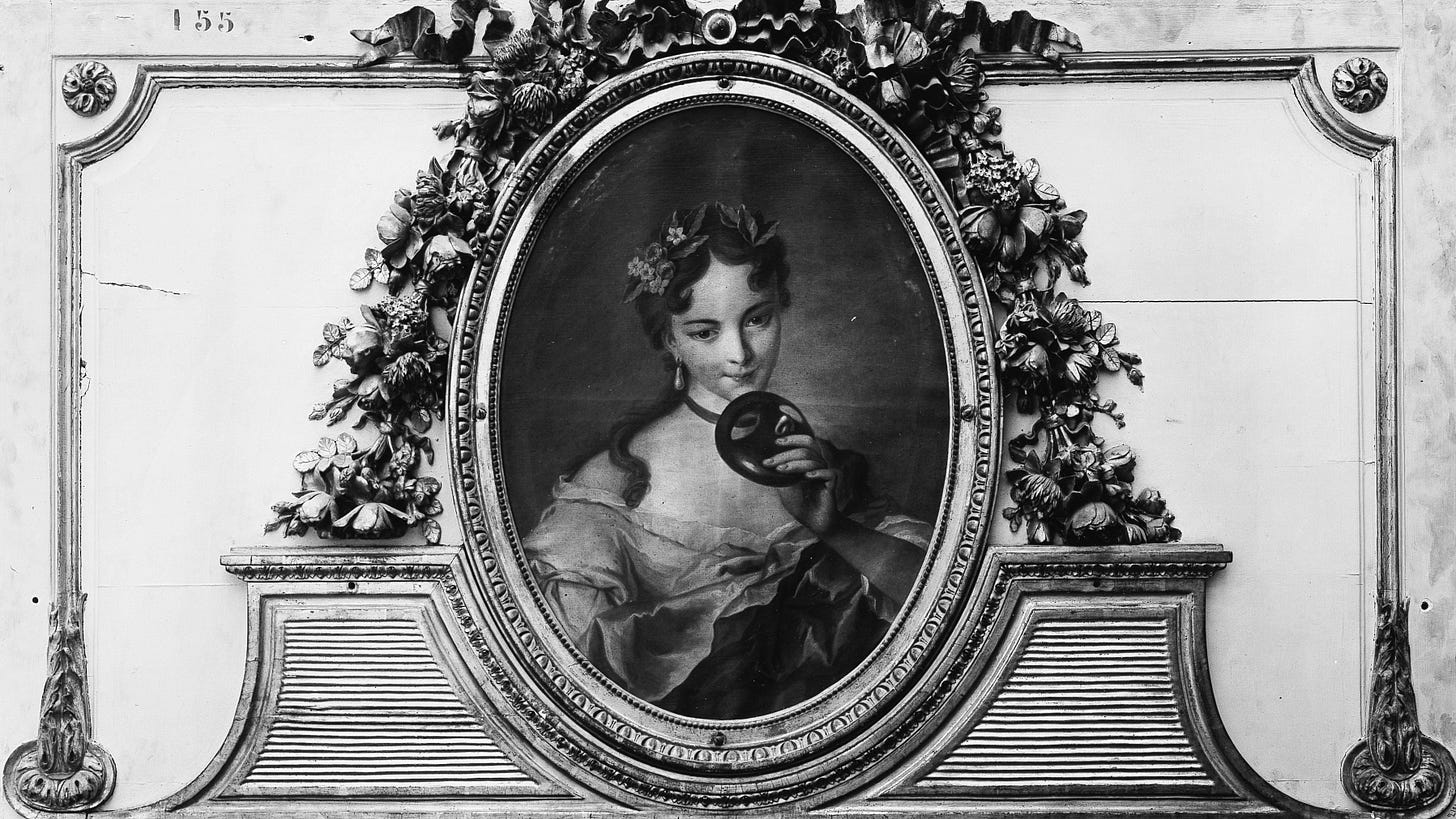
Despite the clear criminality of her tale—she robbed, by my count, at least 10 people—something about her sees her story often rendered as heroic, especially now. In a world that didn’t allow a woman much agency or many rights, Mary Carleton stole some for herself, and for that she is often beloved.
If you liked this story, you will love my book, Unruly Figures: Twenty Tales of Rebels, Rulebreakers, and Revolutionaries You’ve (Probably) Never Heard Of. You can let me know your thoughts about this or any other episode on Substack, Twitter, and Instagram, where my username is unrulyfigures. If you have a moment, please give this show a five-star review on Spotify or Apple Podcasts–it does help other folks discover the show.
This podcast is researched, written, and produced by me, Valorie Castellanos Clark. If you are into supporting independent research, please share this with at least one person you know. Heck, start a group chat! Tell them they can subscribe wherever they get their podcasts, but for ad-free episodes and behind-the-scenes content, come over to unrulyfigures.substack.com.
If you’d like to get in touch, send me an email at hello@unrulyfigurespodcast.com If you’d like to send us something, you can send it to P.O. Box 27162 Los Angeles CA 90027.
Until next time, stay unruly.
📚 Bibliography
Bank of England: Inflation Calculator. “Inflation Calculator.” Accessed March 25, 2024. https://www.bankofengland.co.uk/monetary-policy/inflation/inflation-calculator.
Bernbaum, Ernest. The Mary Carleton Narratives: 1663-1673, A Missing Chapter in The History of the English Novel. Cambridge: Harvard University Press, 1914.
Castellanos Clark, Valorie. Unruly Figures: Twenty Tales of Rebels, Rulebreakers, and Revolutionaries You’ve (Probably) Never Heard Of. New York: PA Press, 2024.
Lilley, Kate. “Mary Carleton’s False Additions: The Case of the ‘German Princess.’” Edited by Monique Rooney. Humanities Review XVI, no. 1 (2010): 79–89.
———. “‘These Novels of My Life’: Mary Carleton’s Crimes.” Australian Feminist Studies 25, no. 65 (November 2, 2010): 265–79.
“London Stage Database: Season 1663-1664.” University of Oregon, April 1664.
Lyon, Karen. “Wooing and Wedding: Courtship and Marriage in Early Modern England | Folger Shakespeare Library.” Folger Shakespeare Library: Folger Story (blog), June 8, 2018. https://www.folger.edu/blogs/folger-story/wooing-and-wedding-courtship-and-marriage-in-early-modern-england/.
Mary Carleton: Seductress or Survivor? - YouTube. Accessed March 18, 2024.
“Mary Carleton, the German Princess - YouTube.” Ye Olde Crime. Accessed March 18, 2024.
Suzuki, Mihoko. Mary Carleton: Printed Writings 1641–1700: Series II, Part Three, Volume 6. 1st edition. Routledge, 2017.
———. “The Case of Mary Carleton: Representing the Female Subject, 1663-73.” Tulsa Studies in Women’s Literature 12, no. 1 (1993): 61–83. https://doi.org/10.2307/463757.
Wagner, Geraldine. “The Staged Self in Mary Carleton’s Autobiographical Narratives.” CLCWeb: Comparative Literature and Culture 7, no. 3 (September 1, 2005). https://doi.org/10.7771/1481-4374.1273.
FYI, some of the links in here are affiliate links! That just means that if you click through and purchase something, I’ll get a few cents in my pocket but it won’t cost any more for you.
Mihoko Suzuki, Mary Carleton: Printed Writings 1641–1700: Series II, Part Three, Volume 6, 1st edition (Routledge, 2017). Kindle.
Suzuki, 44
Kate Lilley, “Mary Carleton’s False Additions: The Case of the ‘German Princess,’” ed. Monique Rooney, Humanities Review XVI, no. 1 (2010): 79–89.
Lilley, “Mary Carleton’s False Additions,” 81
Karen Lyon, “Wooing and Wedding: Courtship and Marriage in Early Modern England | Folger Shakespeare Library,” Folger Shakespeare Library: Folger Story (blog), June 8, 2018, https://www.folger.edu/blogs/folger-story/wooing-and-wedding-courtship-and-marriage-in-early-modern-england/.
Lilley, “Mary Carleton’s False Additions,” 81
“Mary Carleton, the German Princess - YouTube,” Ye Olde Crime podcast, accessed March 18, 2024.
Ye Olde Crime podcast
“Inflation Calculator,” Bank of England: Inflation Calculator, accessed March 25, 2024, https://www.bankofengland.co.uk/monetary-policy/inflation/inflation-calculator.
Ye Olde Crime podcast
Ernest Bernbaum, The Mary Carleton Narratives: 1663-1673, A Missing Chapter in The History of the English Novel (Cambridge: Harvard University Press, 1914).
Ye Olde Crime podcast
Ye Olde Crime podcast
Kate Lilley, “‘These Novels of My Life’: Mary Carleton’s Crimes,” Australian Feminist Studies 25, no. 65 (November 2, 2010): 265–79.
“London Stage Database: Season 1663-1664” (University of Oregon).
Bank of England
Ye Olde Crime podcast
Ye Olde Crime podcast
Lilley, “Mary Carleton’s False Additions,” 82
Lilley, “Mary Carleton’s False Additions,” 82
Valorie Castellanos Clark, Unruly Figures: Twenty Tales of Rebels, Rulebreakers, and Revolutionaries You’ve (Probably) Never Heard Of. (New York: PA Press, 2024).
Suzuki, 36-38
Lilley, “Mary Carleton’s False Additions,” 83
Lilley, “Mary Carleton’s False Additions,” 83





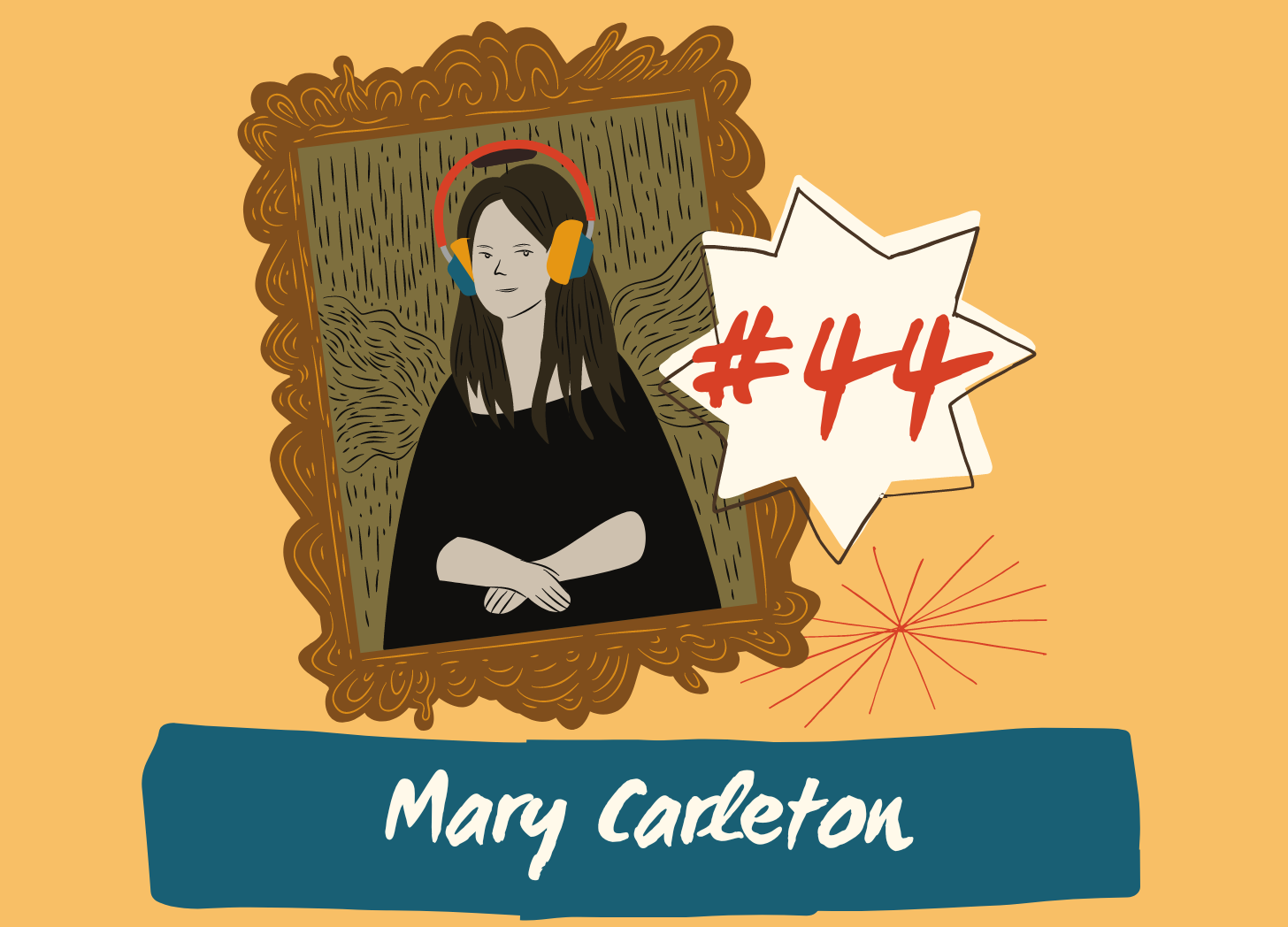


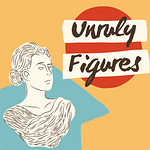

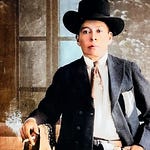

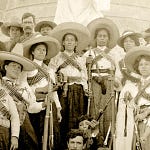


#44: Mary Carleton